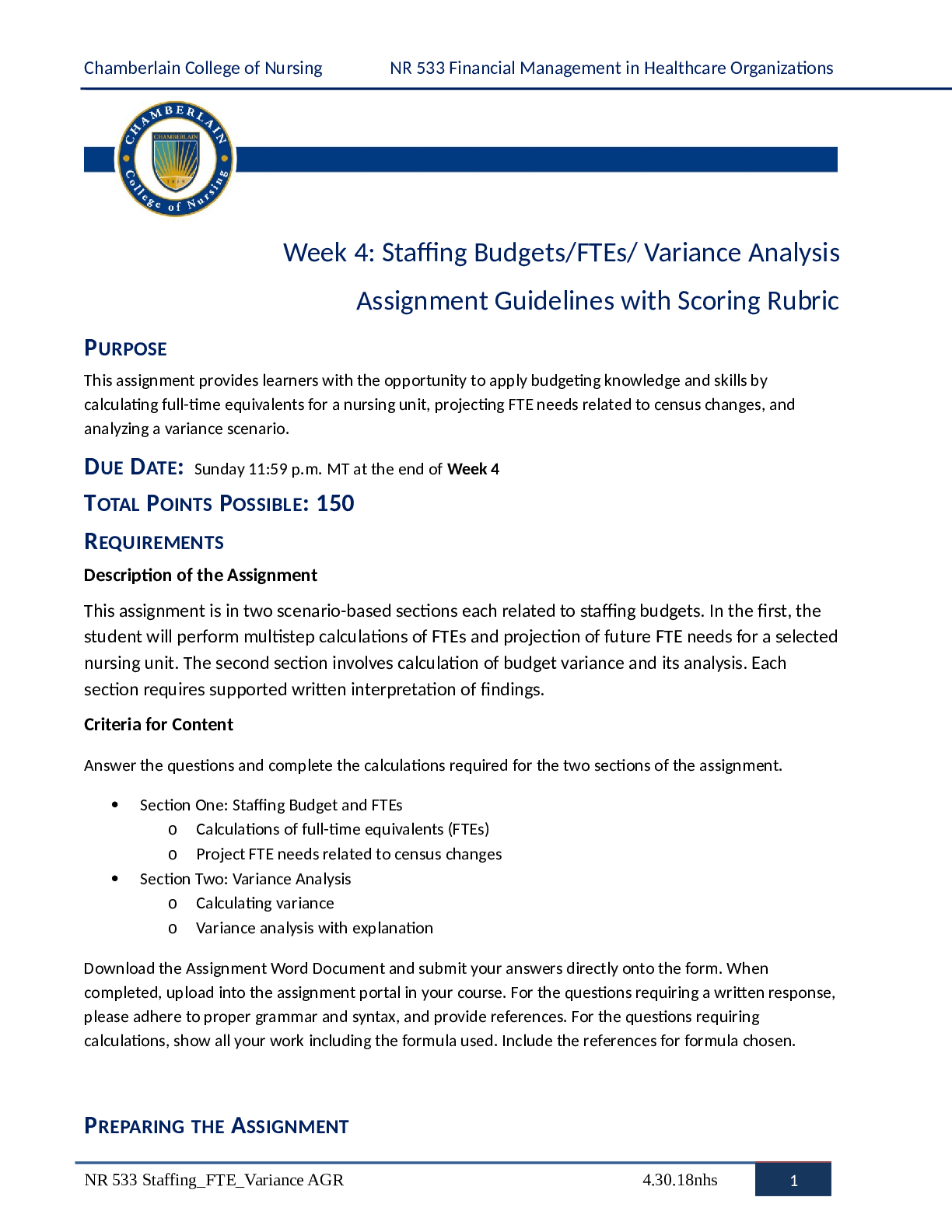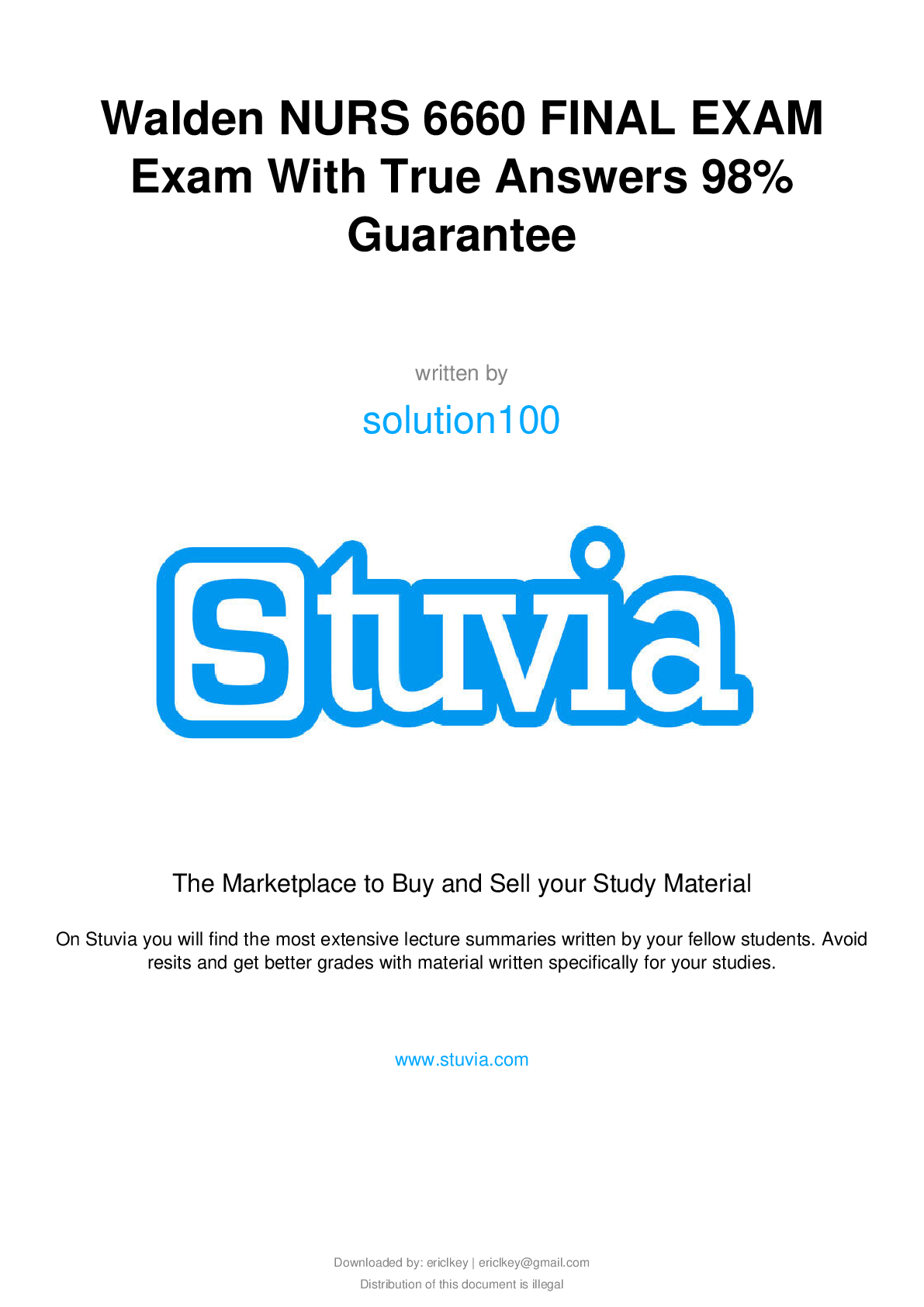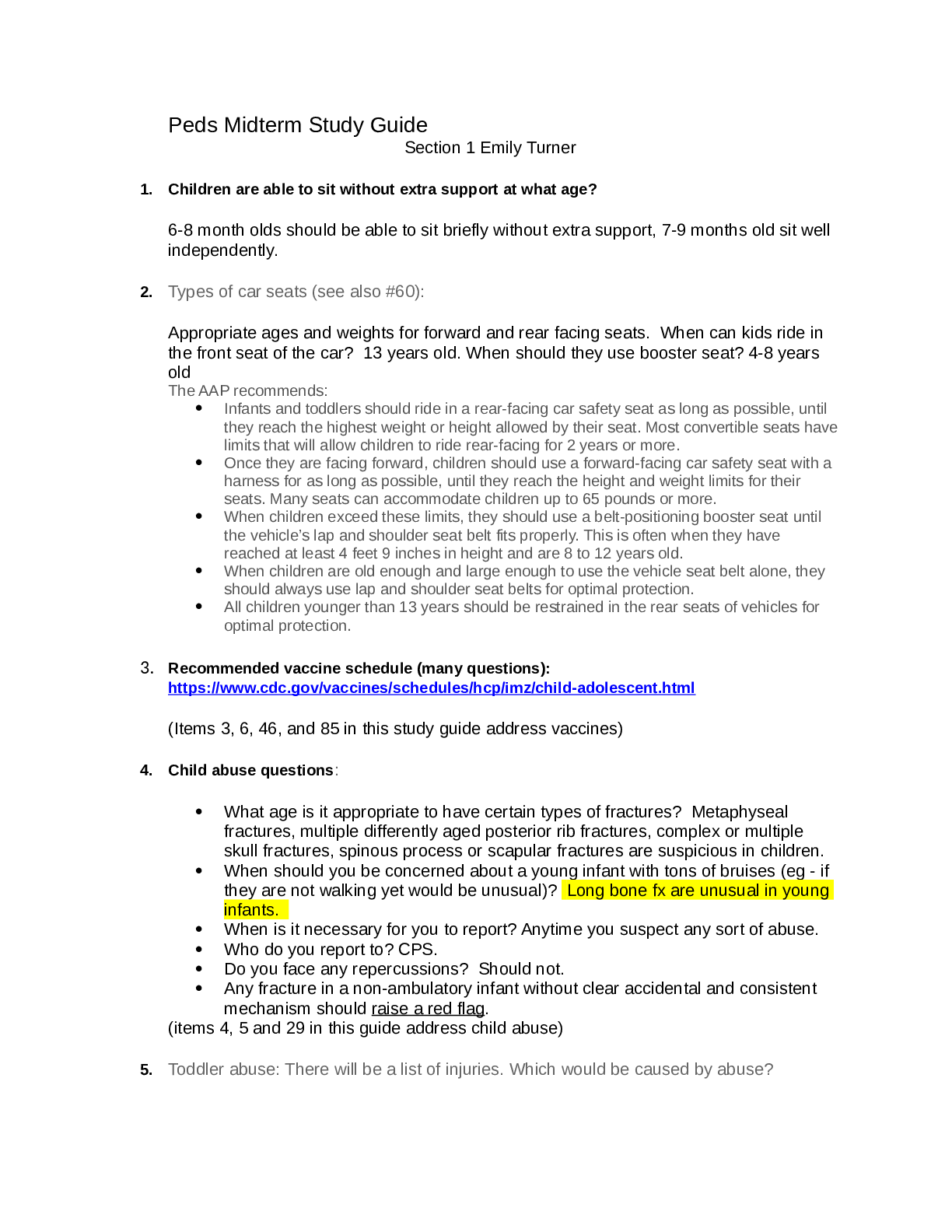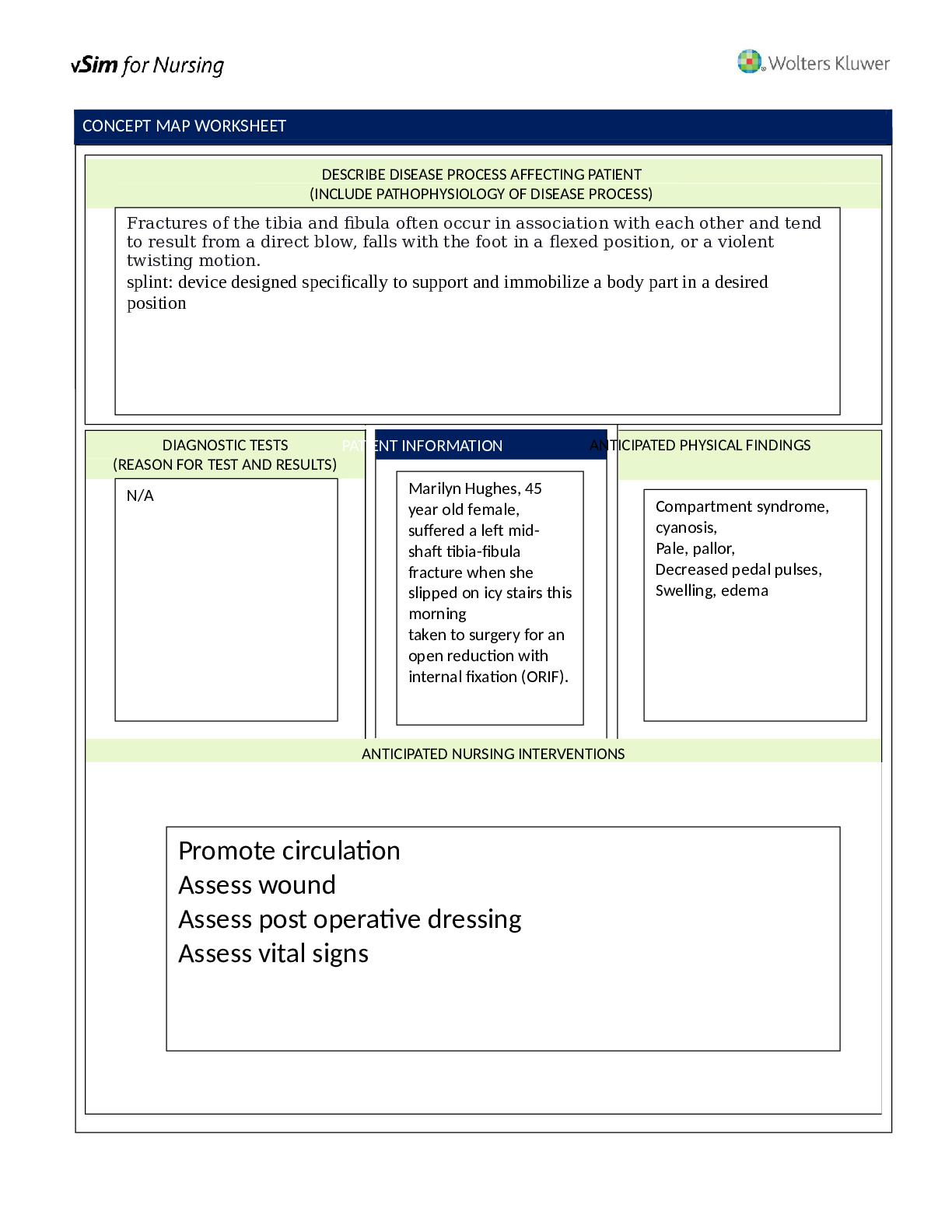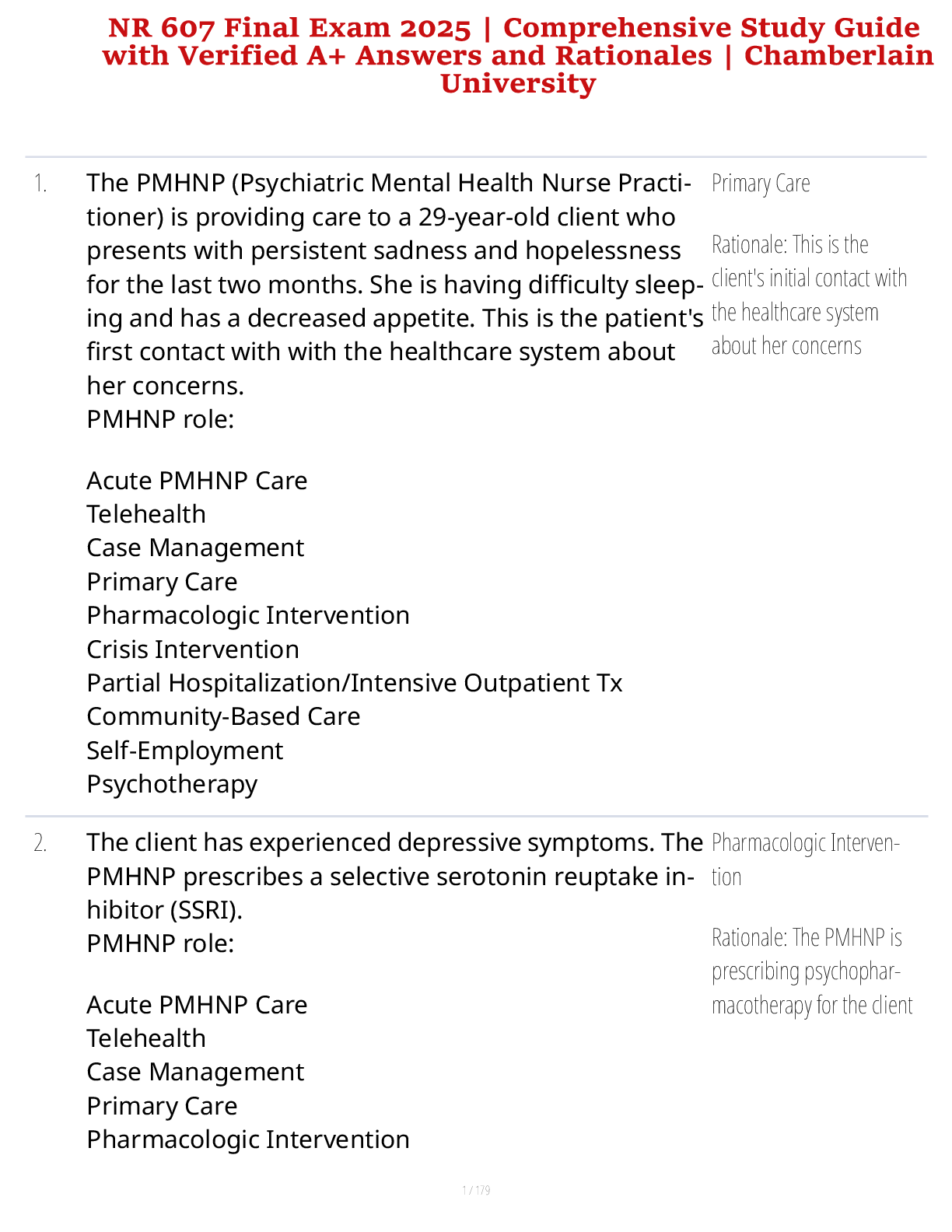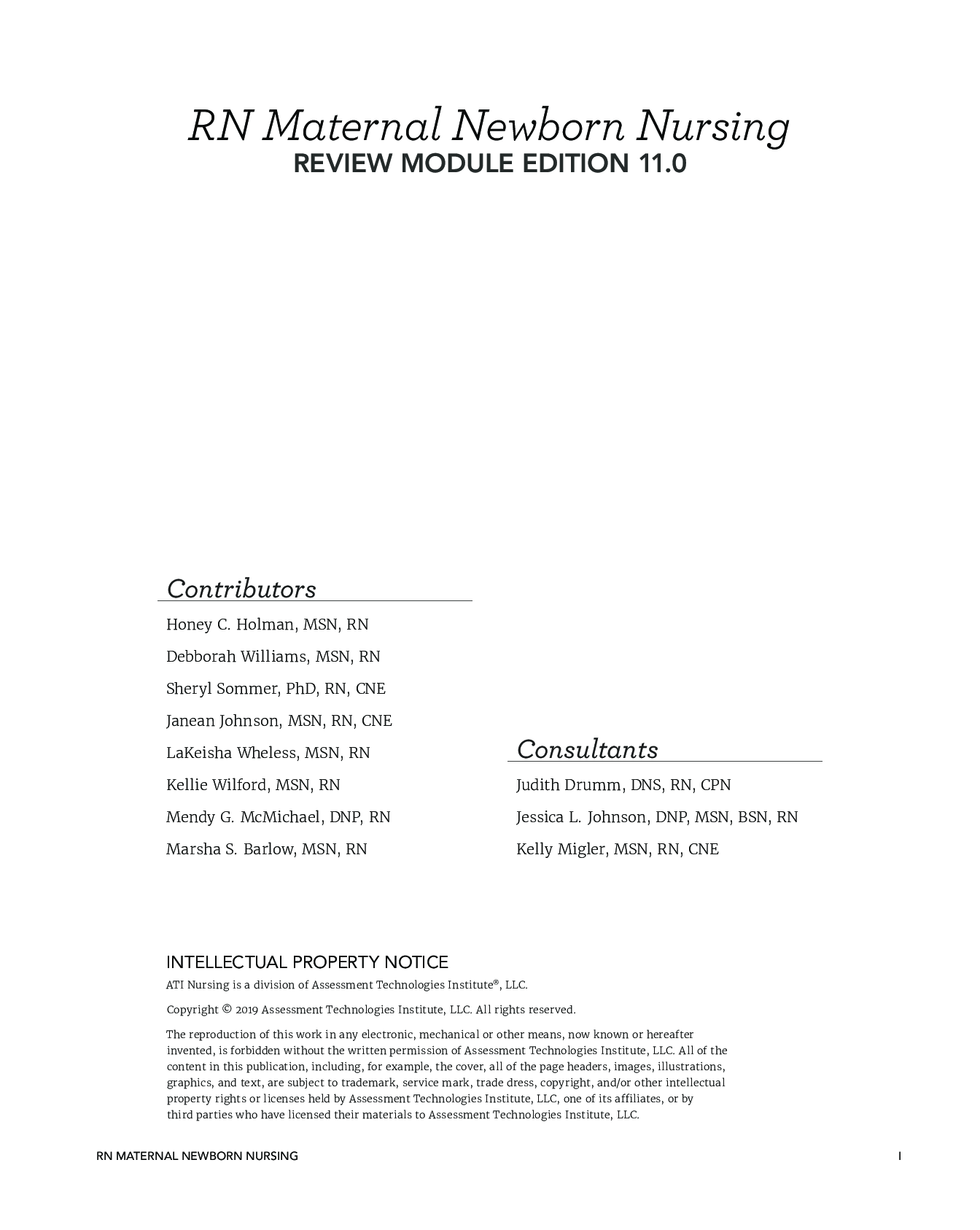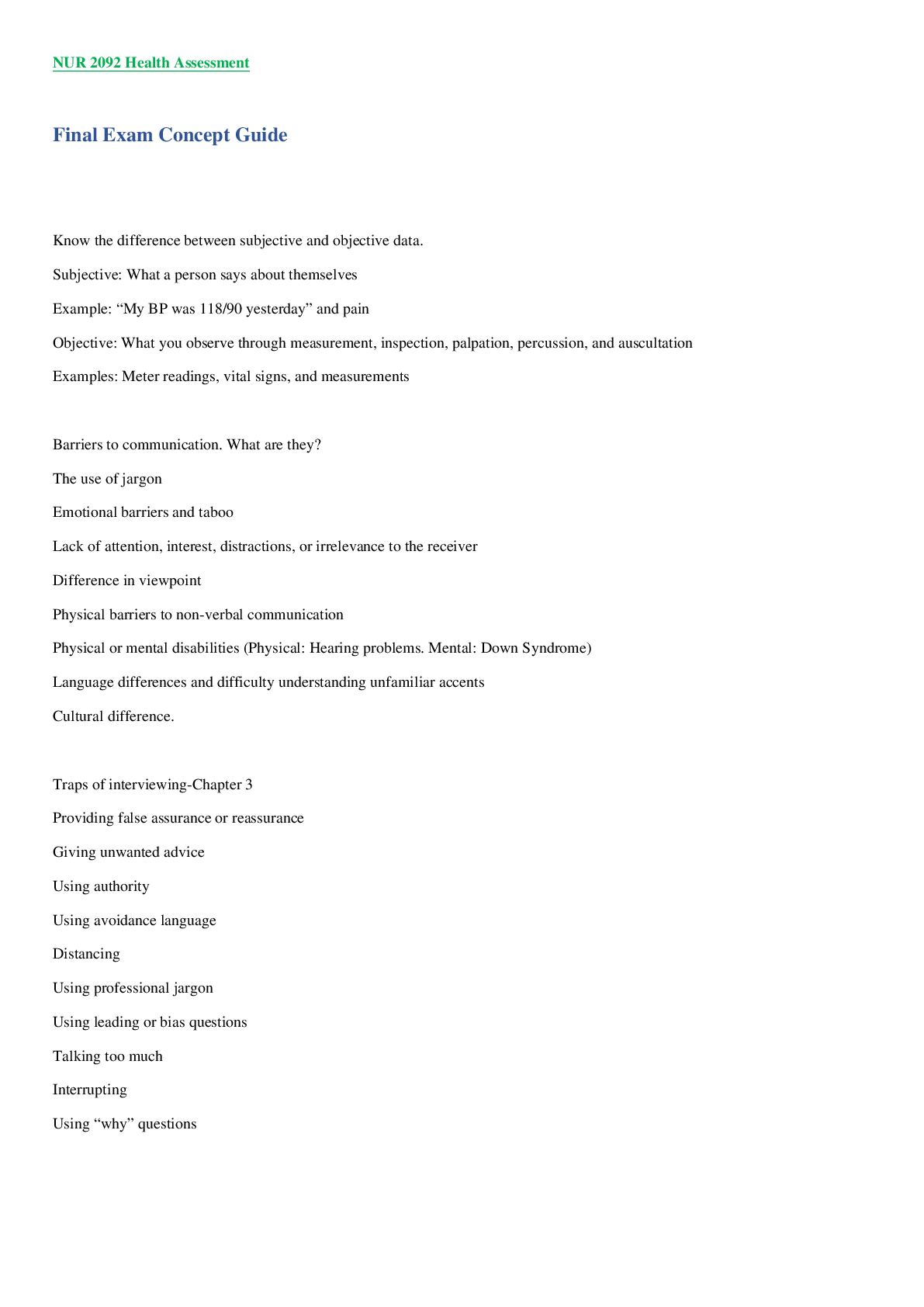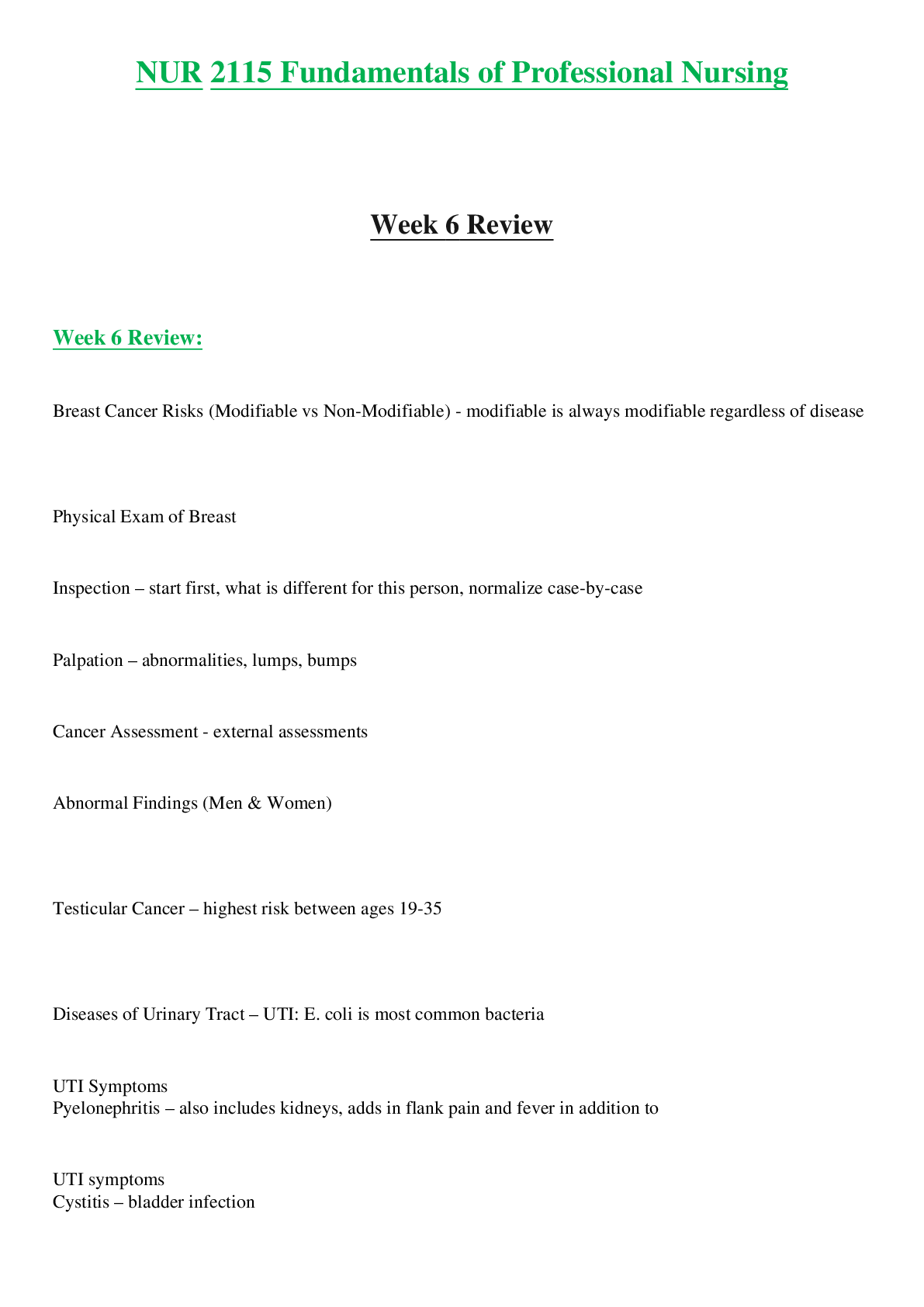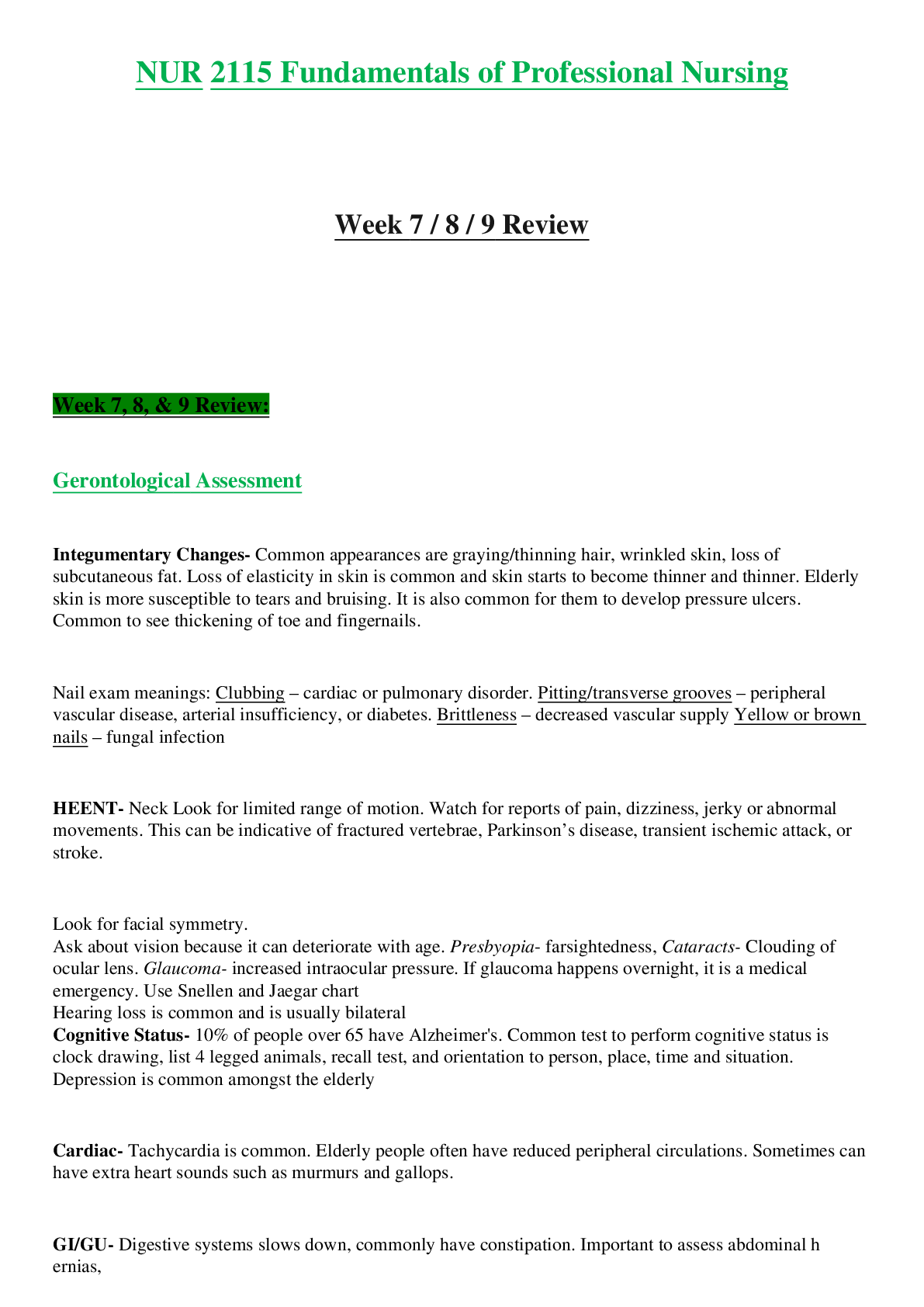*NURSING > STUDY GUIDE > Chapter 45: Digestive and Gastrointestinal Treatment Modalities (All)
Chapter 45: Digestive and Gastrointestinal Treatment Modalities
Document Content and Description Below
Antireflux valve: valve that prevents return or backward flow of fluid Bolus: a feeding administered into the stomach in large amounts and at designated intervals Central venous access devic ... e (CVAD): a device designed and used for administration of sterile fluids, nutrition formulas, and medications into central veins Cyclic feeding: periodic infusion of feedings given over 8 to 18 hours Decompression (gastric/intestinal): removal of gastric or intestinal contents to prevent gas and fluid distention Dumping syndrome: physiologic response to rapid emptying of gastric contents into the small intestine, manifested by nausea, weakness, sweating, palpitations, syncope, and possibly diarrhea; occurs in patient who have had a rapid infusion of fluids and nutrition formulas directly into a tube accessing the small intestine Enteral access device: device inserted into the gastrointestinal tract for either decompression and drainage or the infusion of nutrition formulas, fluid, and medications Enteral nutrition: nutritional formula feedings infused through a tube directly into the gastrointestinal tract Gastroparesis: partial paralysis of the stomach that results in decreased gastric motility and emptying Gastrostomy: surgical creation of an opening into the stomach for the purpose of administering fluids, nutrition formulas, and medications or for decompression and drainage of stomach contents Intravenous fat emulsion (IVFE): an oil-in-water emulsion of oils, egg phospholipids, and glycerin; also referred to as intravenous lipid emulsion Intubation: the insertion or placement of a tube into a body structure or passageway Jejunostomy: surgical creation of an opening into the jejunum for the purpose of administering fluids, nutrition formulas, and medications Jejunum: second portion of the small intestine, which extends from the duodenum to the ileum Lavage: flushing of the stomach with water or other fluids with a gastric tube to clear it Lumen: the channel within a tube or catheter Nasoduodenal tube: tube inserted through the nose into the proximal portion of the small intestine (i.e., duodenum) Nasoenteric tube: tube inserted through the nose into the stomach and beyond the pylorus into the small intestine Nasogastric (NG) tube: tube inserted through the nose into the stomach Nasojejunal tube: tube inserted through the nose into the second portion of the small intestine (i.e., jejunum) Orogastric tube: tube inserted through the mouth into the stomach Osmolality: ionic concentration of fluid Parenteral nutrition (PN): method of supplying nutrients to the body by an intravenous route Percutaneous endoscopic gastrostomy (PEG): a feeding tube inserted endoscopically into the stomach Peripherally inserted central catheter (PICC): a device inserted into a peripheral vein and designed and used for administration of sterile fluids, nutrition formulas, and medications into central veins Peristalsis: wavelike movement that occurs involuntarily in the alimentary canal Ph: the degree of acidity or alkalinity of a substance or solution Radiopaque: can be easily localized on x-ray Stoma: artificially created opening between a body cavity (e.g., stomach or intestine) and the body surface 1 [Show More]
Last updated: 3 years ago
Preview 1 out of 10 pages
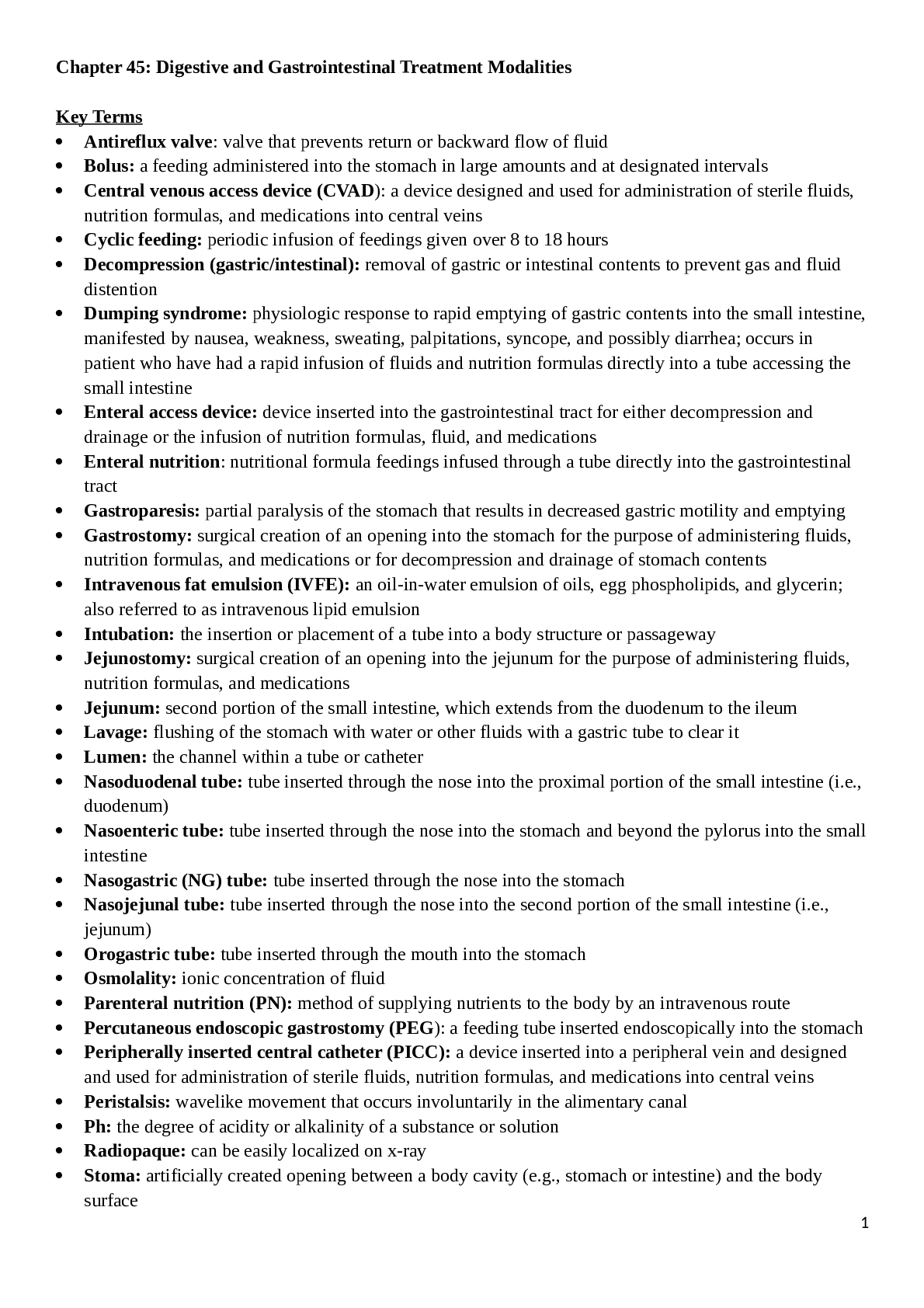
Buy this document to get the full access instantly
Instant Download Access after purchase
Buy NowInstant download
We Accept:

Reviews( 0 )
$10.00
Can't find what you want? Try our AI powered Search
Document information
Connected school, study & course
About the document
Uploaded On
Aug 19, 2021
Number of pages
10
Written in
All
Additional information
This document has been written for:
Uploaded
Aug 19, 2021
Downloads
0
Views
138

